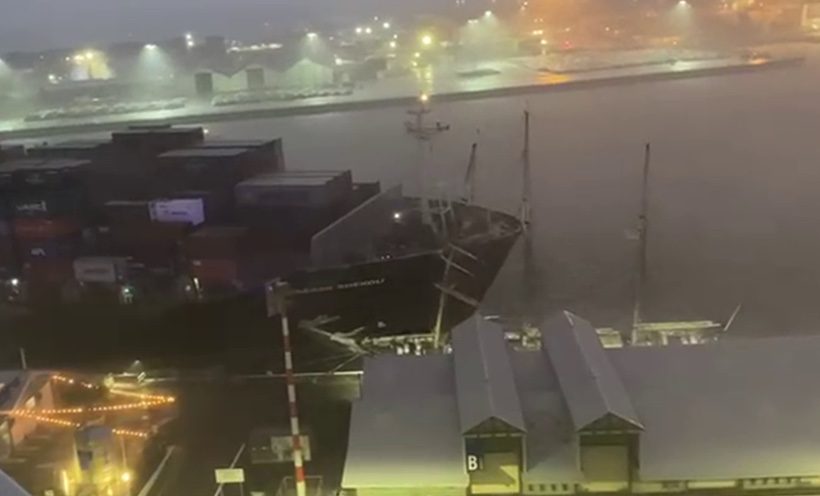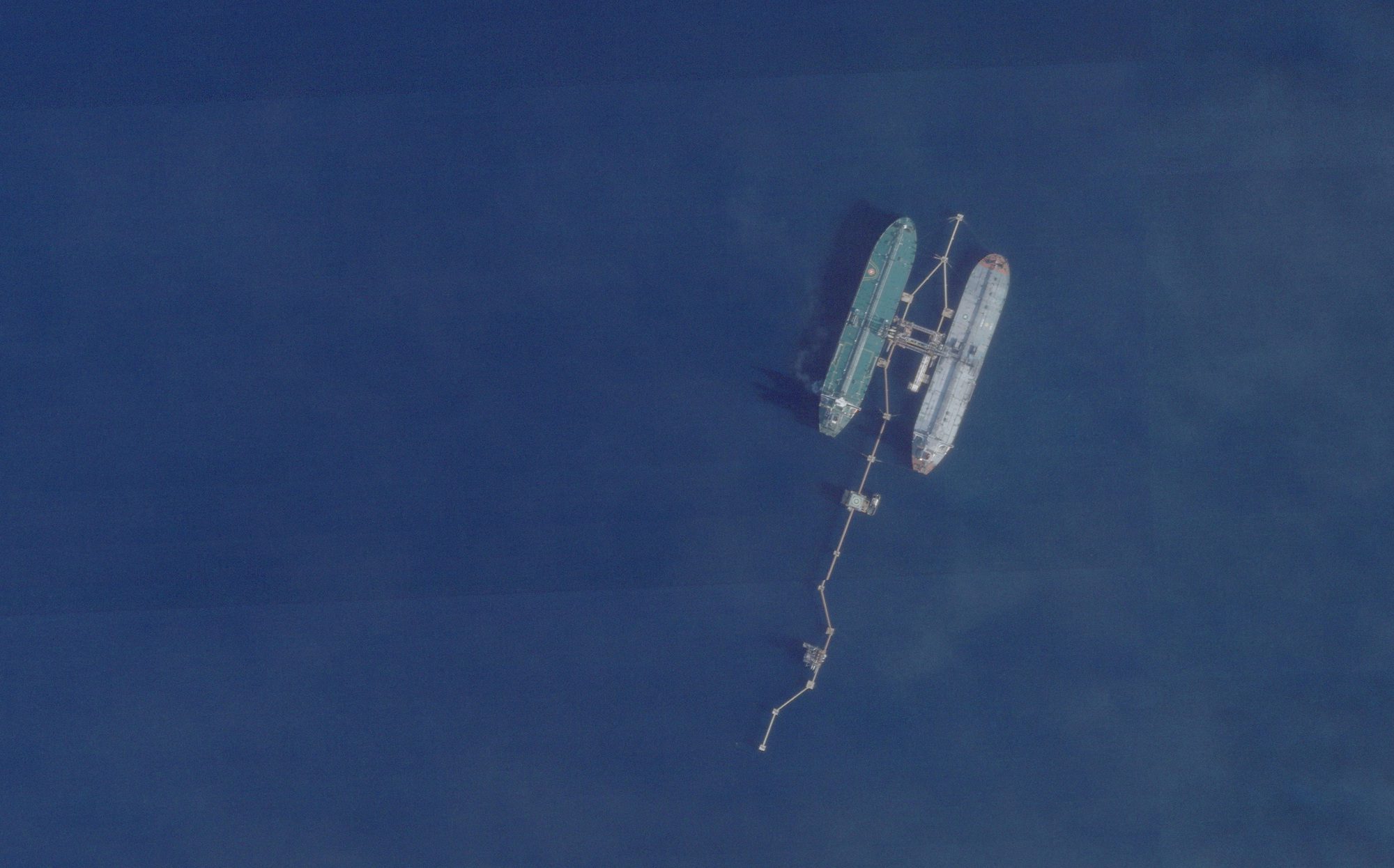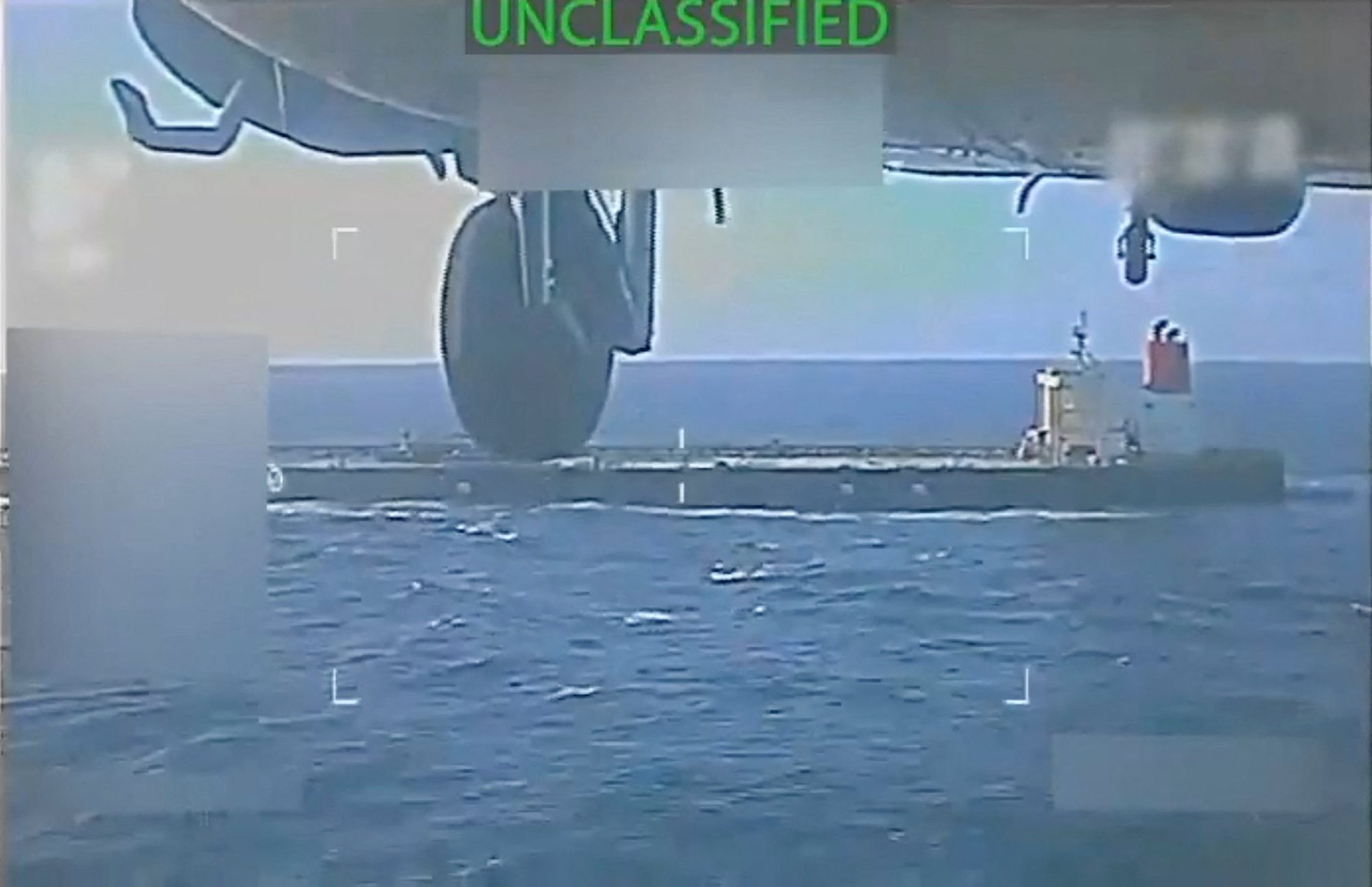A breakdown in bridge resource management and a critical distraction aboard the 333-meter containership Maersk Shekou led to its collision with the tall ship Leeuwin II at Western Australia’s Port of Fremantle before dawn on August 30, 2024, according to a final investigation report released by the Australian Transport Safety Bureau.
The Singapore-flagged vessel was navigating into Fremantle’s inner harbor under the direction of two harbor pilots during heavy squalls when a series of coordination failures resulted in the ship plowing into the berthed Leeuwin II, dismasting the historic vessel and injuring two crew members who were fleeing down its gangway at the moment of impact.
Analysis of the ship’s vessel data recorder revealed that the primary pilot failed to issue a planned 10-degree port helm order to turn into the inner harbor—an omission that went undetected by the entire bridge team.
While the pilot attempted to maneuver the ship using the main engine and four tugs, the helmsman continued following the previous heading of 083 degrees, effectively countering the planned turn. The Maersk Shekou continued toward Victoria Quay, where it struck the Leeuwin II before its stern contacted the wharf and containers struck the roof of the WA Maritime Museum.
Phone Call Distraction During Critical Passage
Compounding the coordination breakdown, investigators found the secondary pilot was engaged in a non-essential mobile phone call while transiting a critical section of the entrance channel—a distraction that prevented them from identifying that the lead pilot had not ordered the course change and that the helmsman was opposing the ship’s intended turn.
“This highlights the importance of minimizing distractions on the bridge, especially during critical stages of a passage,” ATSB Chief Commissioner Angus Mitchell said in the report.
The investigation determined that the bridge team—comprising both pilots and the ship’s crew—failed to maintain what maritime safety experts call a “shared mental model” of the required actions during the passage.
“A properly functioning bridge team requires that all its members maintain a shared mental model to actively monitor a ship’s progress,” Mitchell explained. “This relies on relevant information being conveyed to all members of the team, and actions that are incorrect being identified, communicated and rectified immediately.”
The investigation also identified that delays in securing the supporting tugs meant the bridge team was still dealing with the final tug’s attachment just as the ship approached the critical turn point for the inner harbor entrance channel, significantly increasing workload during the most demanding phase of the transit.
Multiple Procedural Violations Identified
Beyond the immediate causes of the collision, investigators found that several risk controls established by Fremantle Ports for large container vessel entries had not been properly implemented. The Maersk Shekou entered the inner harbor channel without all tugs secured, before sunrise, and in wind conditions well exceeding operational limits—all contraventions of documented procedures.
“These factors collectively reduced the effectiveness of the port’s risk control measures and increased the risk of future safety occurrences,” Mitchell noted.
The container ship sustained minor damage including a hull breach, but its crew and pilots were uninjured. Both Fremantle Ports and pilotage provider Fremantle Pilots have committed to implementing safety actions in response to the investigation findings.
Mitchell concluded with a reminder about the dynamic nature of marine operations: “It is essential any associated risks and consequences—particularly those affecting pre-defined and documented limits—are carefully reassessed when required, and any changes to the plan are effectively communicated between all concerned parties.”

 Join The Club
Join The Club










